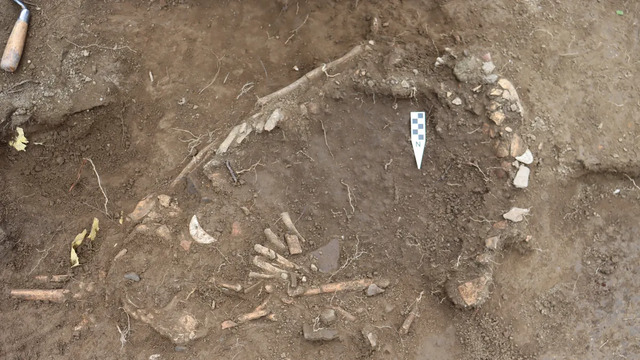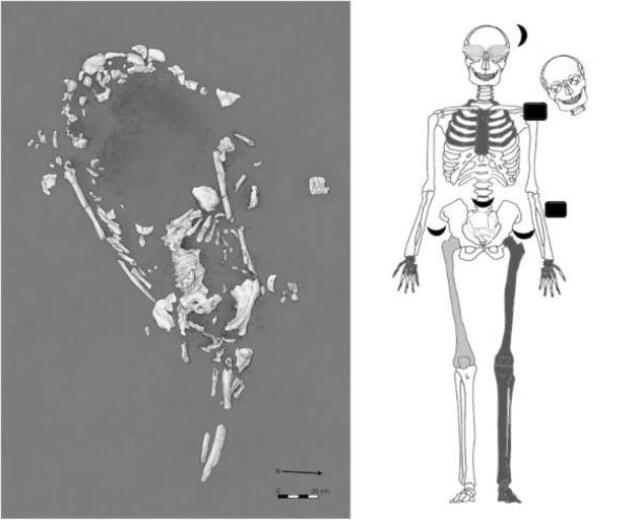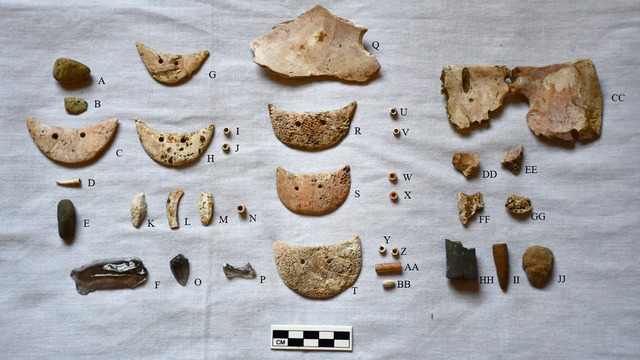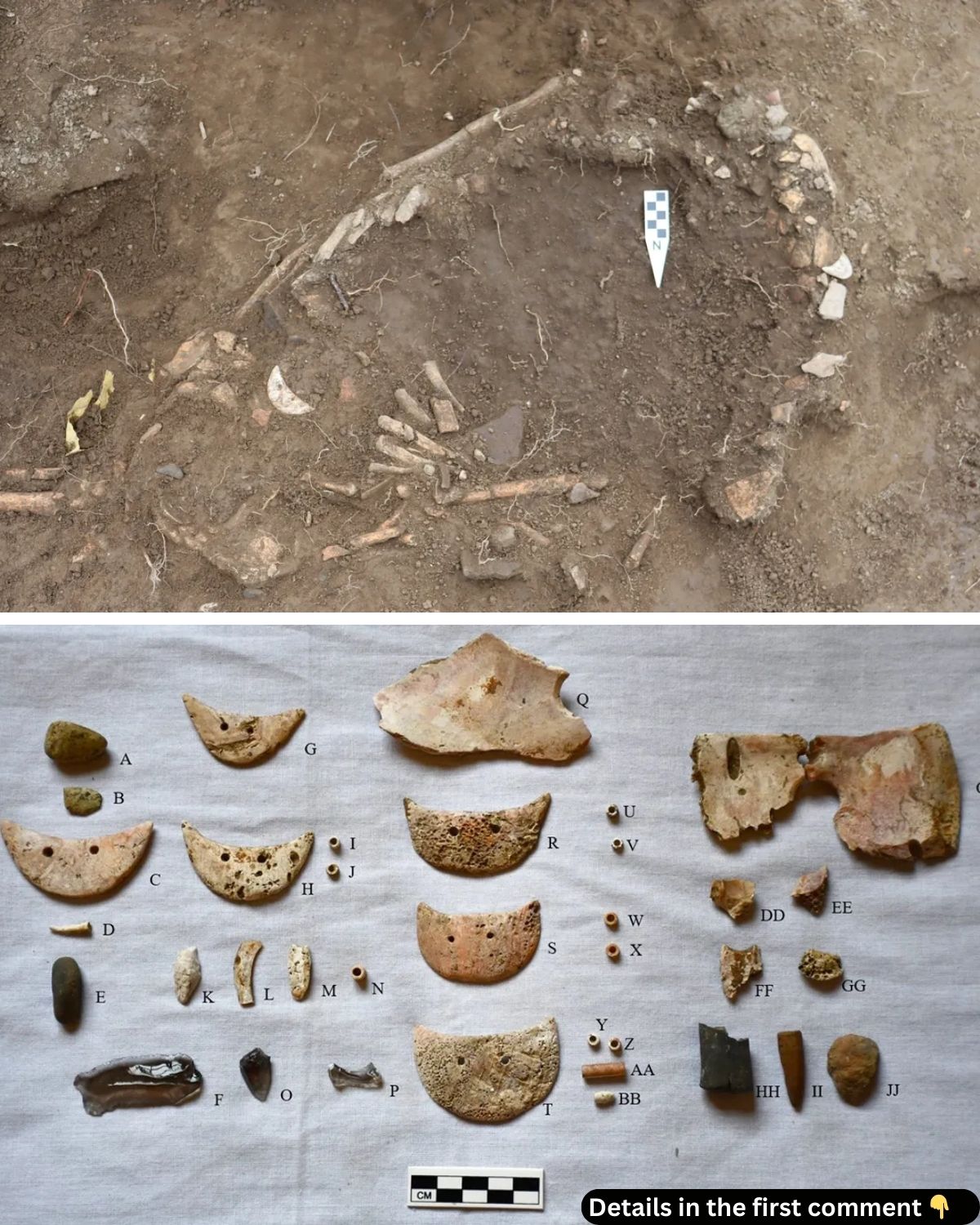Archaeologists in Ecuador have unearthed a burial that not only challenges our understanding of ancient customs but also offers a glimpse into the complex relationship between environmental stress and societal practices. A pregnant woman, whose remains have been carefully studied, may have been sacrificed to ensure the survival of crops during a period of intense El Niño. With extraordinary burial practices and a compelling set of artifacts, the findings shed new light on the Manteño culture, a civilization that flourished along the coast of modern-day Ecuador between 650 and 1532 CE.
The Pregnant Woman’s Grave: An Unusual Burial
The discovery of a 1,200-year-old burial site in Ecuador has drawn considerable attention for its unusual nature. Archaeologists discovered the remains of a young woman, approximately 17 to 20 years old, who was in her late stages of pregnancy when she died. Radiocarbon dating places her death between 771 and 953 CE. Her grave, located in the Buen Suceso region, is one of six excavated at the site, but it stood out due to its striking difference from the others. The young woman’s burial suggests something beyond typical death rituals of the time, especially given the unusual manner of her death and the artifacts accompanying her.
The woman’s bones revealed an unsettling truth—she had been dismembered after death. The removal of her hands and one leg, alongside a blow to the skull that likely led to her death, raises the question of why such brutal treatment was given to a pregnant woman. This evidence suggests that her death was not accidental but potentially a sacrificial act. Further investigations of the site led to the discovery of a fetus buried alongside her, strengthening the theory that the woman’s death was part of a larger ritualistic event, rather than a personal tragedy.


Video
Watch this video to uncover the chilling story of a ritual sacrifice of a pregnant woman in Ecuador and how it may reveal the community’s fear of her power.
Violent Death and Dismemberment
The dismemberment of the woman’s body offers a chilling insight into her fate. Her skull showed fractures consistent with a fatal blow to the front, an indication that she may have been bludgeoned to death. In addition to the disfigurement of her body, the other parts—her hands and leg—were removed posthumously, which was highly irregular. These findings suggest a symbolic and deliberate act rather than a mere act of violence.
The nature of this dismemberment raises important questions about the ritualistic context in which this death occurred. Was this a sacrificial act meant to appease forces outside human control, such as the unpredictable weather patterns of El Niño? Or was her death a means to eliminate someone of significant social or political importance? These questions linger, hinting at deeper meanings within Manteño burial traditions.
Artifacts Found in the Burial
Alongside the pregnant woman’s body were numerous artifacts that shed light on the cultural and spiritual beliefs of the Manteño civilization. Among the most striking discoveries were crescent-shaped ornaments made of Spondylus mollusk shells, placed near the woman’s body, as well as several obsidian blades and a crab claw carefully placed on her abdomen. These items, along with others like cockle shells and ceramic objects, are all steeped in symbolism.
The Spondylus mollusk, which is prized for its association with fertility and water, suggests that the woman and her unborn child were considered sacred figures. The shell’s connection to water—an essential resource for agriculture—further ties this burial to environmental concerns, especially considering the possibility of her death being a response to the challenges posed by El Niño.

The presence of the obsidian blades, often used in rituals, and the crab claw found near her abdomen, further reinforce the idea that the woman was treated with reverence. These items were likely meant to protect her and her fetus in the afterlife, highlighting the belief in the sacredness of both life and death in Manteño society.
The Enigmatic Sacrifice Theory
One of the most compelling aspects of this discovery is the theory that the woman may have been sacrificed as part of an effort to control environmental factors. During this time, the Manteño civilization, like other ancient cultures, faced challenges posed by the unpredictable weather patterns of El Niño. Known for its devastating effects on agriculture, El Niño would have disrupted crop yields, a crucial source of food and sustenance.
The researchers posit that the sacrifice of this pregnant woman was tied to the hope of securing agricultural success. The link between fertility symbols such as the Spondylus shell and water-related artifacts suggests that the community may have believed in the power of this ritual to ensure rain and bountiful crops. In this context, the sacrifice was not just an offering of life but a desperate attempt to manipulate the forces of nature to safeguard the future of the community.
However, there is also the possibility that the woman’s sacrifice was tied to her political and social power. As a woman of high standing within Manteño society, she may have been seen as a threat to rivals. Sacrificing her and her unborn child would have been a way to eliminate her influence while still respecting her status. This duality of motives—environmental and political—adds complexity to the interpretation of this burial.
Political Implications and Status
The high status of the woman buried in the grave is apparent from the richness of the artifacts discovered with her. The fact that she was seven to nine months pregnant suggests that her death may have been seen as a loss for the community, both in terms of the power she held and the potential of her child. In cultures with rigid social hierarchies, the elimination of a figure with such influence would have been a bold and dramatic act, one that would have been justified by the ritual of sacrifice.
Given the cultural and social dynamics of the time, it is plausible that this burial reflects an attempt to neutralize a powerful individual—someone whose position might have been seen as threatening to those in power. The care taken in her burial, despite the violent nature of her death, hints at a complex social structure that allowed for both the sacrifice of influential figures and the acknowledgment of their importance within society.
Contradictions in the Burial Practices
The juxtaposition of the woman’s brutal death with the elaborate and reverent burial practices raises intriguing questions about Manteño society. While the dismemberment and violent death suggest a dehumanizing ritual, the rich offerings, particularly the sacred Spondylus shells and other artifacts, indicate that the woman’s status was still highly respected. This duality is a feature not uncommon in ancient sacrificial rituals, where the act of killing and the honoring of the deceased coexisted in a delicate balance.
The placement of the Spondylus shells and obsidian blades around her body shows that the community held her in high regard, suggesting that even in death, she retained a special significance. This complex burial practice points to the nuanced way in which ancient societies navigated power dynamics, religious beliefs, and environmental concerns.
Video
Don’t miss this video revealing the 4,500-year-old mummified remains of a woman discovered in Peru, offering a glimpse into ancient history.
Conclusions and Future Research
The discovery of the pregnant woman’s burial in Ecuador opens up new avenues for research into ancient practices of sacrifice and the complex relationship between humans and the environment. While the exact motivations behind this burial remain speculative, it is clear that the Manteño culture viewed both fertility and social power as central to their understanding of life, death, and the natural world. The intriguing nature of this burial prompts further questions about the role of women in ancient societies and the ways in which communities responded to environmental pressures.
As archaeological research continues at this site, future findings may provide more clarity on the relationship between social, political, and environmental factors in ancient Ecuador. This discovery challenges historians and archaeologists to rethink the ways in which ancient societies balanced their cultural and environmental concerns, offering a deeper understanding of their values and beliefs.



